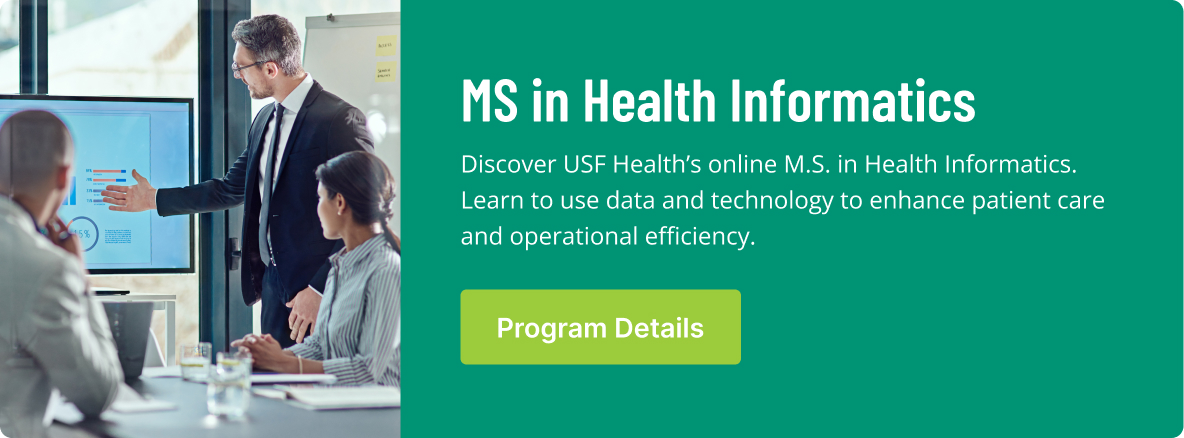Health information technology (HIT) jobs are among the most in-demand and fastest growing professions in the healthcare jobs market. Many of those jobs will be in health information technologies (HIT). According to the U.S. Bureau of Labor Statistics (BLS), employment of health information technologists and medical registrars is expected to grow more than 16% from 2022 to 2032, much faster than the average for all occupations.
The tremendous growth is creating organizational transformation and impacting organizations’ readiness and priorities for the future. The 2022 Leadership and Workforce Survey conducted by the research arm of the Healthcare Information and Management Systems Society (HIMSS) found that 70% of respondents feel their organizations’ leadership is well equipped to advance their organizations in the next 1-2 years. Top priorities within that time frame include cybersecurity and improving the staff experience. Despite economic challenges in the healthcare industry like operating costs and labor shortages, the shifting approach to overcoming challenges by decision-makers is more promising to make professionals with HIT experience more employable than ever.
Career Paths in Healthcare IT
- Electronic medical or health record (EMR, EHR) development and maintenance – As the healthcare industry continues transitioning from paper to digital recordkeeping by hospitals, doctor’s offices, clinics and nursing facilities, the use of EHRs and EMRs has grown in importance. Professionals with working knowledge of these tools are beneficial to organizations seeking to optimize patient data and care operations.
- Analytics – Once the data has been collected, professionals are needed to read, analyze and offer suggestions for program improvements. Hospitals build care protocols from collected data, and staffing projections come from analyzing patient admission and diagnosis trends. Insurance companies, pharmaceutical companies and medical supply manufacturers all study healthcare data when making production and payment decisions.
- Coding – Coding experts are needed to help healthcare providers shift to an international standard coding system called ICD-11 (the 11th revision of the International Statistical Classification of Diseases and Related Health Problems). ICD-11 is the international standard for systematic recording, reporting, analysis, interpretation and comparison of mortality and morbidity data. For the first time, ICD is fully electronic, currently providing access to 17,000 diagnostic categories, with over 100,000 medical diagnostic index terms. The index-based search algorithm interprets more than 1.6 million terms.
- Education and Research – For there to be an expanding employee pool, there must be colleges teaching them. Opportunities in the education sector likely will grow to meet student demands.
- Meaningful Use – The Medicare and Medicaid EHR Incentive Programs provide financial incentives for the “meaningful use” of certified Electronic Health Record (EHR) technology. Meaningful use refers to using electronic health records to improve quality, safety and care coordination among healthcare providers, as well as maintaining privacy and security of patient health information and more. It is hoped that meaningful use compliance will lead to better clinical outcomes, improved population health outcomes, increased transparency and efficiency and more robust research data. Specialists in this field ensure that a medical facility, employees and its affiliates comply with HITECH requirements and deadlines for Meaningful Use.
Health IT Job Descriptions and Salaries
- Medical and Health Services Manager – These medical professionals work as administrators or executives who plan, direct and coordinate healthcare services. Regardless of whether they originate from a health IT position, they must possess a solid working knowledge of EMR and EHR trends. The median annual pay in the U.S. for these positions in 2023 was $110,680, and the field is expected to grow by 28% from 2022–2032, according to the BLS.
- Chief Medical Information (or Informatics) Officer (CMIO) – These hospital executives also might be called directors of health informatics or medical informatics, and are a recent addition to the health IT job field. They typically are highly skilled, experienced IT professionals with a solid background in healthcare, although many practicing healthcare providers have made the transition into IT. They evaluate and improve an organization’s record-keeping system, as well as implementing updated EHR or EMR systems. As of Jan. 2024, the national average CMIO salary was $274,592 according to ZipRecruiter.
- Medical Records and Health Information Technician – These health IT specialists organize and manage health data, primarily through the use of EHR and EMR systems. They earned a median salary of $48,780 in 2023, according to the BLS. Jobs in this profession often require certification, and earning an advanced degree, such as a Master of Science in Health Informatics, can lead to career advancement and higher salary potential.
- Nurse Informaticist – Also known as nursing informatics specialists, these healthcare professionals often move from the provider sector to health IT. They are responsible for organizing and managing records using EHR and/or EMR systems. The American Nurses Association defines a nursing informaticist as someone who oversees the integration of data, information and knowledge to support decision making by patients and their healthcare providers. According to the HIMSS Nursing Informatics Workforce Survey, In 2022, 60% of nurse informaticists reported a salary greater than $100,000. This was up from 49% in 2020, 45% in 2017 and 33% in 2014.
*National long-term projections may not reflect local and/or short-term economic or job conditions, and do not guarantee actual job growth. Information provided is not intended to represent a complete list of hiring companies or job titles, and degree program options do not guarantee career or salary outcomes. Students should conduct independent research for specific employment information.




